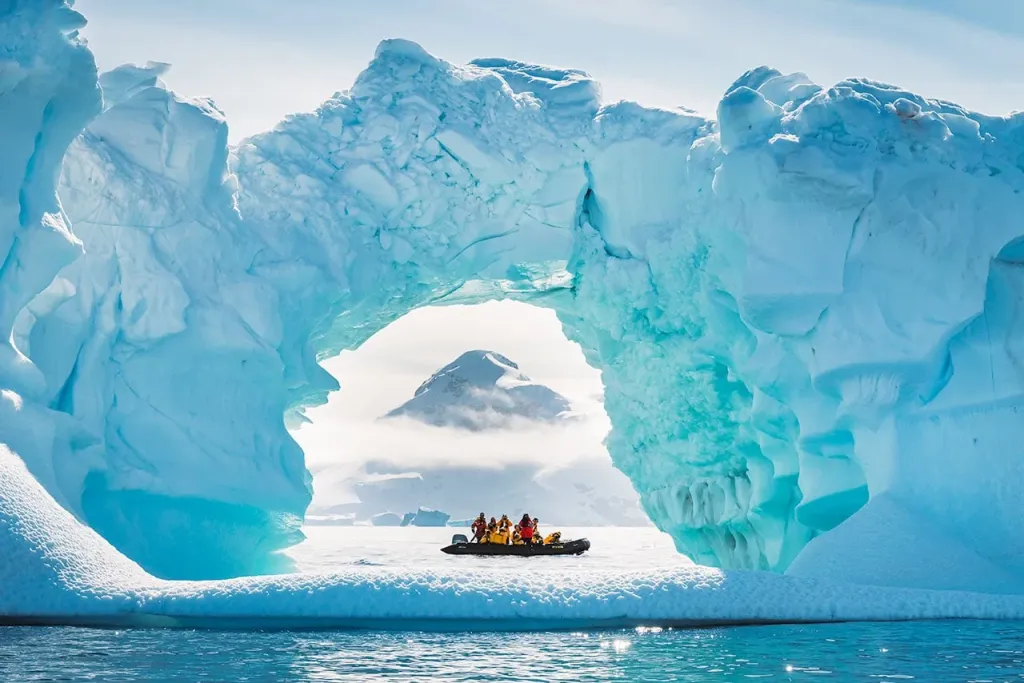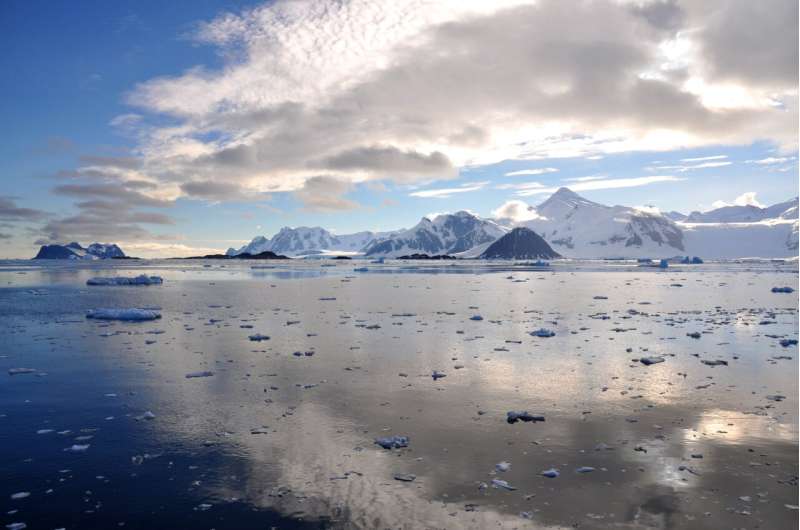Scientists watch rapid retreat of Antarctic ice sheet
- November 28, 2023
- 0
Scientists warn that seemingly stable Antarctic ice caps could be “changing very quickly” and losing large amounts of ice as a result of warming oceans. Their discovery came
Scientists warn that seemingly stable Antarctic ice caps could be “changing very quickly” and losing large amounts of ice as a result of warming oceans. Their discovery came

Scientists warn that seemingly stable Antarctic ice caps could be “changing very quickly” and losing large amounts of ice as a result of warming oceans. Their discovery came after a research team led by Benjamin Wallis, a glaciologist at the University of Leeds, used satellites to monitor the Cadman Glacier, which flows into Biscochea Bay on the western Antarctic Peninsula. The researchers published their analysis, “Ocean warming drives rapid dynamic sea ice activation on the West Antarctic Peninsula.” Nature Communication.
Between November 2018 and May 2021, the glacier retreated eight kilometers following the collapse of the ice shelf at the tip of the glacier, where the ice extends seaward and is anchored to the seafloor in an area known as the ground zone. The ice shelf will act as a buffer, slowing the glacier’s movement towards the sea.
Scientists believe that the ice shelf, surrounded by warmer ocean waters, is thinning and losing soil, and the ice shelf can no longer hold the glacier. As a result, the glacier’s flow rate increased significantly – doubling its speed – increasing the amount of ice that fell into the sea in the form of icebergs, a process known as iceberg calving.
Wallis said: “We were surprised to see how quickly Cadman went from a seemingly stable glacier to one where we saw sudden degradation and severe ice loss.
“What was interesting was that neighboring glaciers in this part of the West Antarctic Peninsula did not respond in the same way, which may provide important lessons for how we can better predict how climate change will continue to affect this important and sensitive polar region.”
“Our study combined three decades of data, nine different satellite missions, and in situ oceanographic measurements to understand the changes taking place in Antarctica. This shows how important long-term monitoring of Earth’s polar regions is, with an array of sensors telling us a different part of the story.” “
Cadman Glacier is currently in a state of “significant dynamic instability”, according to scientists. The ice on the glacier continues to thin, losing about 20 meters of height per year. This is equivalent to losing the height of a five-story building every year. Approximately 2.16 billion metric tons of ice flows from the Cadman Glacier into the ocean each year.
Unusually high ocean water temperatures around the West Antarctic Peninsula in early 2018/19 are believed to have triggered rapid dynamic changes in the Cadman Glacier system.

Scientists analyzing historical satellite data believe that warm ocean waters have been gradually thinning the ice shelf since the early 2000s and possibly the 1970s. Warmer water was transported deeper into the water column rather than on the surface of the ocean. This warm water may have reached the ice shelf, where it settled on the seafloor. As a result, the ice shelf begins to melt from the bottom up.
In 2018/19 the ice sheet was so thin that it broke away from the ground area and began floating, effectively sliding off its anchor, allowing the Cadman Glacier to shed more ice into the seas. But the scientific group still faced a big question. Why did the Cadman Glacier collapse while the nearby Funk and Lever Glaciers remained relatively stable?
Analyzing underwater oceanographic data, the team believes that a series of underwater rock structures called ridges or sills at depths of 200 and 230 meters act as a protective barrier, preventing channels of warmer water from reaching the glaciers. Although they warn that increasing ocean warming could threaten the ridges’ ability to protect some glaciers.
Professor Michael Meredith, of the British Antarctic Survey and one of the authors of the paper, said: “We have known for some time that the ocean around Antarctica is warming rapidly, posing a significant threat to glaciers and ice sheets from global sea level rise.
“This new study shows that seemingly stable glaciers can change very quickly, become unstable with almost no warning, then thin and retreat very much. This is a reflection of the need for an extensive ocean observing network around Antarctica, especially in areas close to glaciers that are difficult to measure.” “underlines the need.”
What happened to the Cadman Glacier can be viewed as an example of a “glacial tipping point,” where a steady-state system can choose one or two paths depending on a change in environmental parameters, the researchers say in their paper. .
The tipping point was reached in 2018 due to the flow of extremely warm ocean water that caused the ice shelf to push back. Once this milestone was reached, Cadman Glacier increased ice production by 28% in 13 months. Researchers say other glaciers on the Antarctic Peninsula may be vulnerable to similar sudden changes due to underwater geology.
Source: Port Altele
As an experienced journalist and author, Mary has been reporting on the latest news and trends for over 5 years. With a passion for uncovering the stories behind the headlines, Mary has earned a reputation as a trusted voice in the world of journalism. Her writing style is insightful, engaging and thought-provoking, as she takes a deep dive into the most pressing issues of our time.